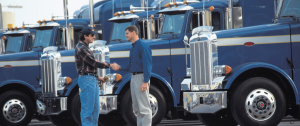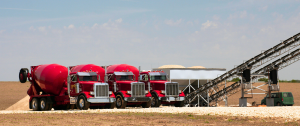
With over 70% of domestic freight in the US transported by truck, commercial truck drivers are responsible for ensuring the timely and safe delivery of a vast array of goods.
As a driver, understanding the nuances between Full Truckload (FTL) and Less Than Truckload (LTL) shipping is crucial for maximizing efficiency, reducing costs, and maintaining customer satisfaction.
Keep reading to find out more about the differences, advantages, and best practices associated with FTL and LTL shipping, so you can continue to make informed decisions and optimize your operations on the road.
What is Full Truckload Shipping?
Typically, you’ll see this mode of transportation abbreviated as FTL (Full Truckload) or TL (Truckload). Simply put, full truckload shipping is when one shipper’s freight takes up an entire trailer. FTL shipments are generally large, heavy shipments or high-value goods that take up the entire space or weight limit of a trailer.
Unlike less than truckload shipping, FTL shipments follow a direct route from origin to destination with no stops in between. This makes for faster transit times with less handling and reloading required by drivers.
This also means that drivers are allowed more flexibility with loading and unloading times, since FTL shipping does not require coordination at multiple points along the route for pickups and deliveries.
Because FTL shipping involves less handling and more direct routes, shippers usually prefer to use this method for time-sensitive deliveries and fragile goods. However, FTL is also the most expensive shipping option and is only efficient when freight is large enough to take up the entire trailer.
How is Less Than Truckload Shipping Different?
Drivers can also choose a less than truckload run, which involves carrying shipments from multiple customers in one truck. Each shipment occupies only part of the trailer space, making it ideal for smaller freight.
Because LTL shipping follows the “hub and spoke” model of utilizing different transportation hubs to sort and redistribute individual freight, this shipping method requires multiple stops along the route.
Drivers must consider that the frequency of pickup and delivery stops and the increase in handling of freight at various distribution centers leads to a longer transit time and higher risk of damage. LTL shipping requires careful loading and unloading practices at every stop to ensure the safe delivery of freight.
Understanding the differences between FTL and LTL shipping is important for every truck driver. With both methods, it is essential to optimize load distribution, route efficiency, and loading/unloading practices to save time and money and improve operations.
For more information on trucking terms, industry trends, and up-to-date advice, be sure to check out more of our Truck Driver Blog posts and connect with us on social media.











